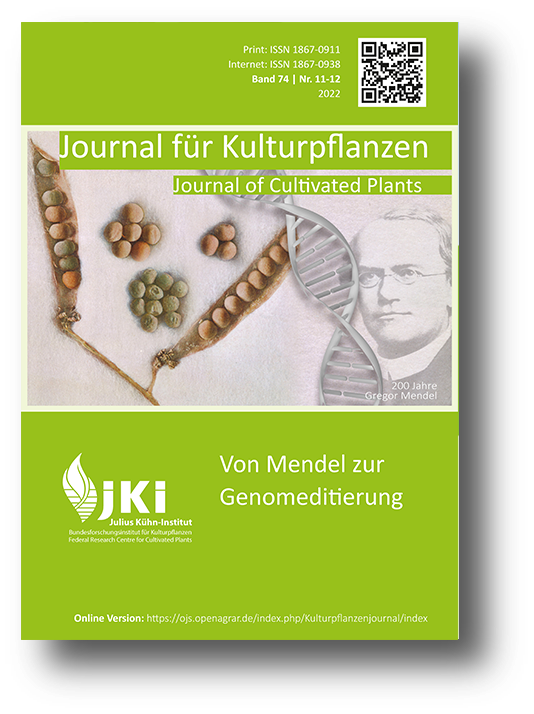On the search for the vernalization locus in caraway (Carum carvi) using genotyping by sequencing data
DOI:
https://doi.org/10.5073/JfK.2022.11-12.06Keywords:
Horticultural plant, Apiaceae, Umbelliferae, marker-assisted selection (MAS), reproductive trait, MendelAbstract
Caraway (Carum carvi) can be divided into biennial and annual flowering types. Biennials require a cold stimulus for initiation of flowering, whereas annuals lack any vernalization requirement. Cultivation of annuals is considered advantageous due to better integration into crop rotation and reduced production costs. However, available annual varieties lack a sufficient yield potential and essential oil content. Valuable genetic diversity exists within the biennial genepool, which can be transferred to the annual genepool by crossbreeding. According to literature, F1 plants from crosses between annual and biennial flowering types uniformly show annual flowering. Resulting F2 populations show a Mendelian 3:1 ratio between annual and biennial flowering types. This indicates a monogenetic inheritance of vernalization requirement in caraway with dominant annual flowering.
After crossbreeding annual and biennial flowering types, the recessive allele for biennial flowering can remain within the breeding material over multiple generations. Thus, a genetic marker associated with the vernalization locus would be beneficial to remove the recessive allele in one selection step. To identify markers associated with vernalization requirement, we used genotyping by sequencing (GBS) data of 70 biennial and 67 annual flowering types. We conducted case-control studies and population differentiation-based tests. In total, 60 common markers were found that were significantly associated with vernalization requirement. Out of these, we developed 19 diagnostic markers. In future, these diagnostic markers might be used to detect recessive alleles in segregating populations.
Downloads
Published
Issue
Section
License
Copyright (c) 2022 Daniel von Maydell, Jens Keilwagen, Heike Lehnert, Thomas Berner, Frank Marthe

This work is licensed under a Creative Commons Attribution 4.0 International License.
The content of the journal is licensed under the Creative Commons Attribution 4.0 License. Any user is free to share and adapt (remix, transform, build upon) the content as long as the original publication is attributed (authors, title, year, journal, issue, pages).
The copyright of the published work remains with the authors. The authors grant the Journal of Cultivated Plants, the Julius Kühn-Institut and the OpenAgrar repository the non-exclusive right to distribute and exploit the work.







